We leave Freetown going around the peninsular road until Waterloo. This way, we avoid the worst part of Freetown and enjoy a nice ride. I will continue the journey onward with Johannes. Luckily, the sun is shining and the road is almost newly paved.
The first kilometers are not paved yet but in construction.

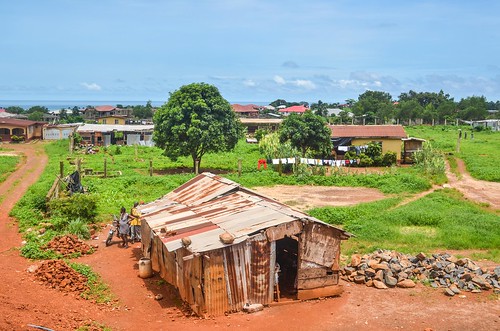
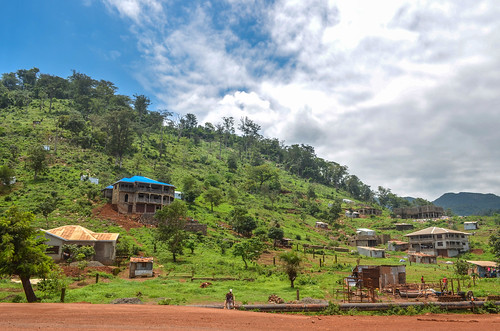
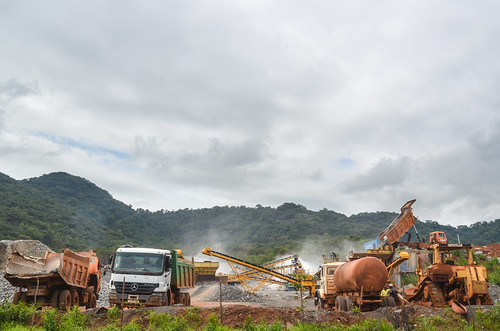
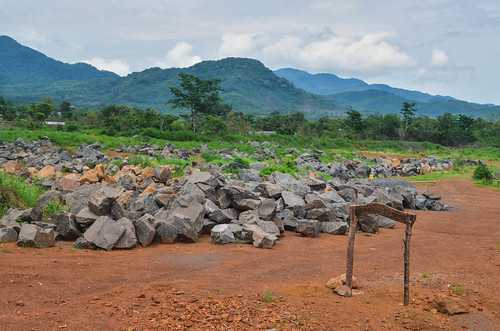
It is easily visible on Google Satellite and also from our ant’s point of view: a bridge is missing, not built yet, to cross over the No.2 river. There, the peninsular road makes a U inside the forest. This is the old road, making the journey last 30 minutes instead of 2, and it makes sense that they are building a new one …


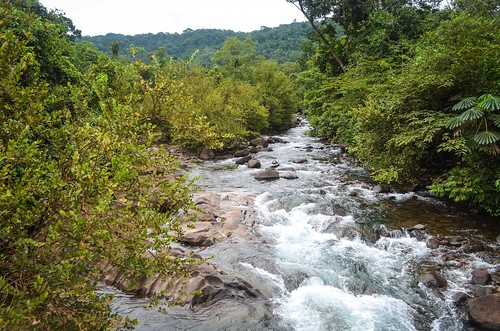
The road is not made to survive the rain and each truck passing there damages it a bit more. The waterlogged tracks give us a foretaste of what could the east of Sierra Leone could be.

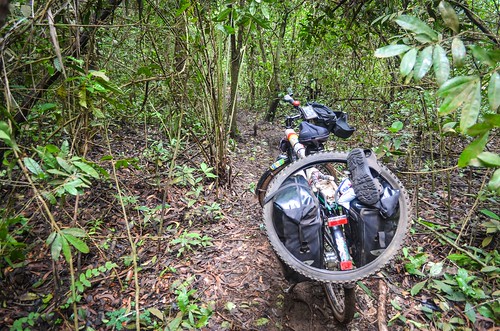
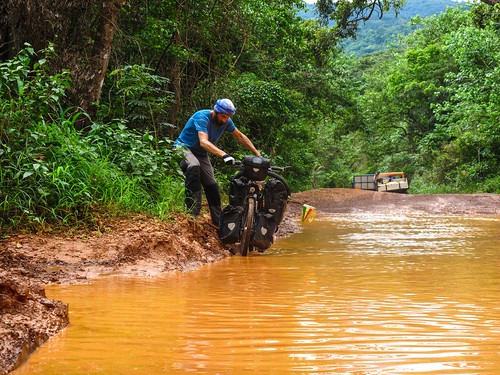
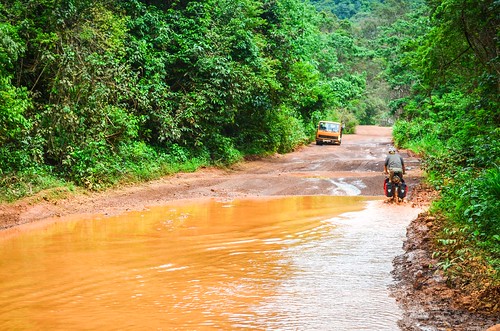
Once again, this red mud paint workshop happens just after I cleaned my bike …
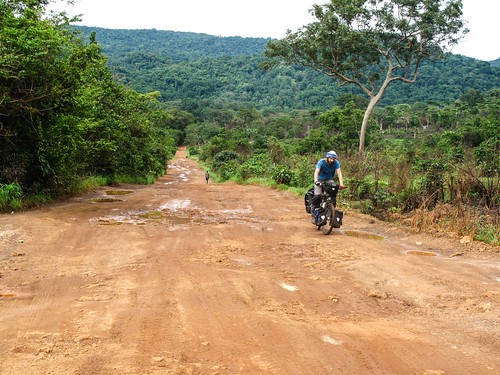

After 20 slow kilometers, we finally land on the new part of the Peninsular road. There is a lot of activity along the road, and this is stone breaking: adults and children use a hammer to break boulders down to small stones and eventually into gravel. They spend the whole day sitting among the boulders and hitting them. They can then sell it for less than a euro per bucket for the construction of houses and roads. That is very sad to see that stone breaker is a common job in a country that should be rich.
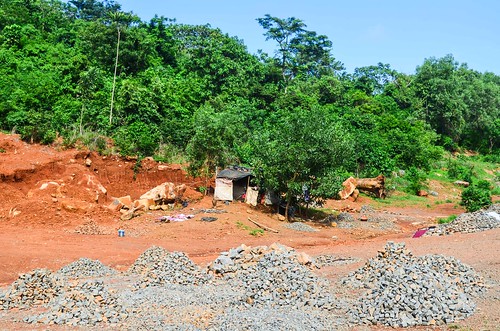
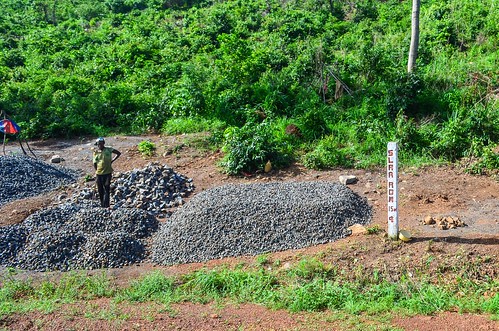
We have been waiting to find food for a long time now, but without success. The beaches in the south of Freetown are very nice, but the services are targeting high-end tourism. The beaches and villages have Western names like Hamilton, River No.2, Black Johnson, Kent, John Obey, etc.
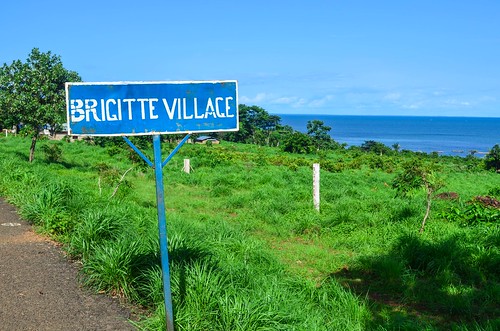
We replace lunch with a very useful discovery: dry peanut cakes. The girls sell them about everywhere, carrying a pile of cakes in a plastic basket on their head. They are cut into pieces of the size of a thick cookie, selling for 500 leones (0,10€) each. And they are just pure peanut powder: eating one of those cakes + drinking half a liter of water makes my belly full like if I had eaten a whole pot of peanut butter. We reach Tombo, the biggest village of the peninsular road, but indicated on no map, just after filling our bellies with peanut powder. From Tombo, we can spot the coast of Sierra Leone out of the peninsula, that we will be cycling in the next days. It is also close to the Banana islands.
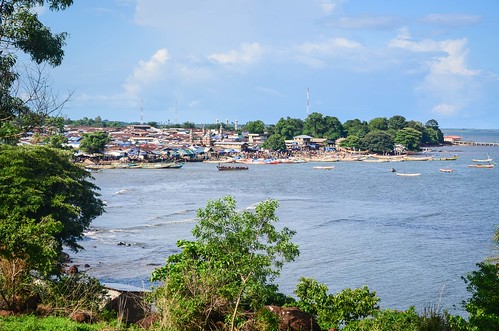
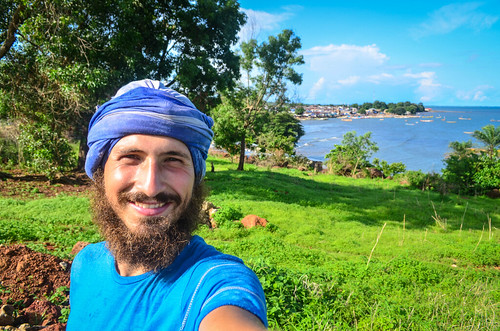
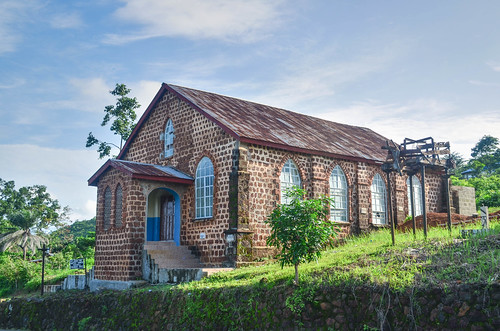
After several days of rain, the shining sun and the blue sky make the whole peninsula look great. The 1 to 2 million people living in Freetown and around are hidden by the mountains.

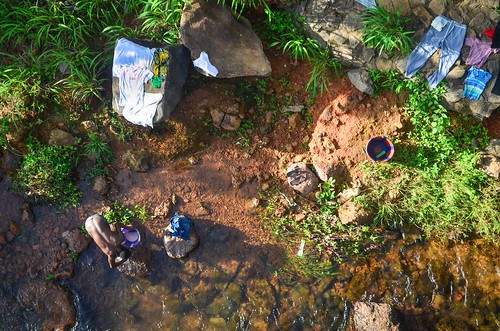

We stop in Waterloo for the night, after a lot of bargaining to get the price of a crappy room down to what would be a rip-off price in Senegal and a luxury price in Morocco. Waterloo is the gateway to the Freetown peninsula on the main highway. Thus it is a relatively important town with a lot of businesses. There is no electricity or public lighting, so all the stalls light up a candle at night.
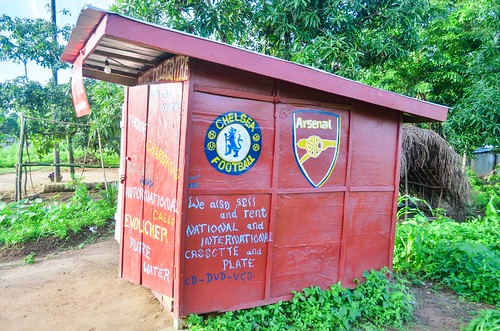
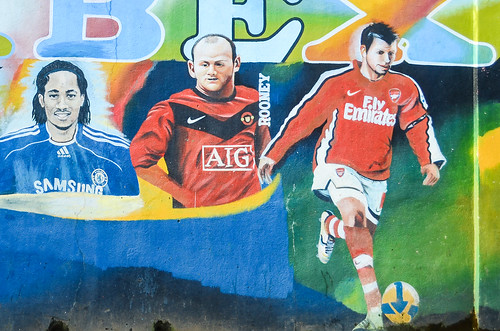
With all those candles and food stalls around, it feels like strolling in a festival in Japan at night. With the difference that we must watch for mud puddles and reckless motorbikers. We find the largest street canteen serving one person every 20 seconds, out of enormous rice and soup pots, for only 2000 leones (0,35€) per delicious and spicy plate. The few shops that have a generator play loud music (the generator noise has to be covered somehow) or screen a movie on a TV or a laptop. Kids gather into large groups in front of those tiny wooden shops to catch a glimpse of the screen.
There is no rain at night and we could have spared this hostel price. But we can never know when will the rain come and how hard …
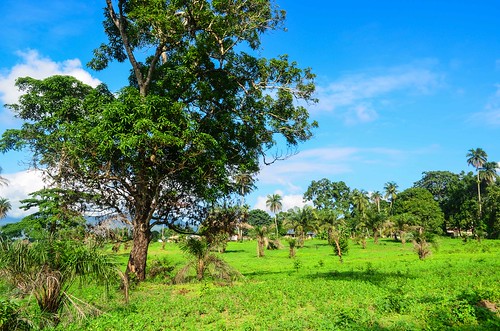
We follow the main road until Bo and Kenema, Sierra Leone’s second and third largest cites, in the East. It is a very nice road, financed by the European Union, and cycling goes fast without much entertainment on the way.

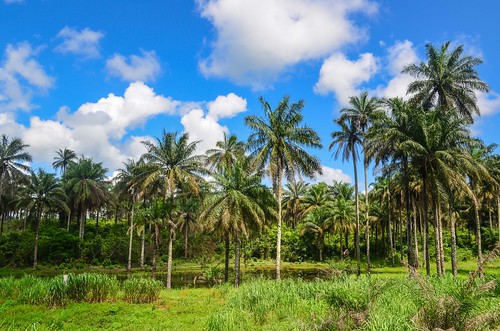

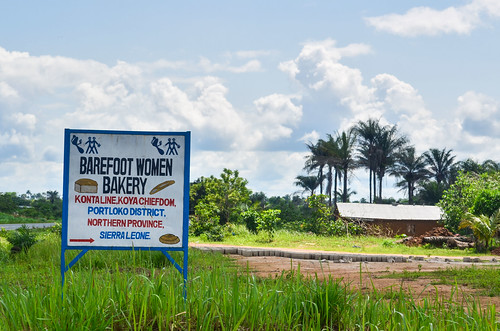
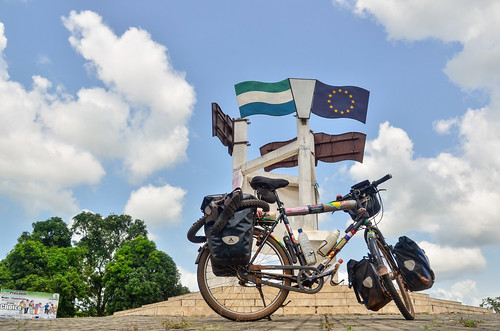



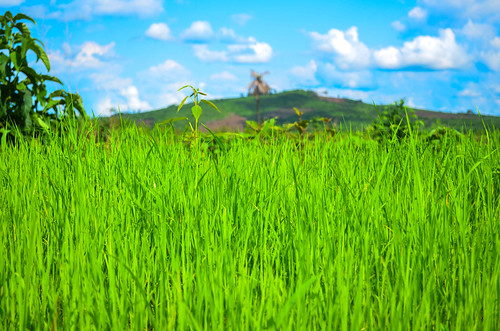
The interesting experience of the day happens at a small food stall in a village. The small villages, too small to have even one shop but benefiting from the traffic along the main road, often set up basic wooden stalls where they sell their local products: vegetables, fruits, eggs, depending on what they produce and harvest.
When we spotted bananas and pineapples there, in the middle of nowhere, we stopped. The price is the lowest one can find: the product is sold directly by the producer, and there is no transport cost. Cost of food in the cities can double or triple just because of the transportation costs.
While eating small bananas (we got 20 for about 0,50 €)(but they didn’t last more than 5 minutes), one of the woman was pushy about selling us her pineapples. The price being the double of what we can have somewhere else, we refused.
The lady started to complain that we are rich and don’t want to buy her things. Other ladies sitting around among heaps of fruits and vegetables also started to ask us money “to eat chop chop“. (chop chop means food, eating). It is often that people use “I’m hungry” to ask for money, even if they are sitting on food or have arms as big as my thighs. If there is something that is not lacking in these green areas, it is food: it is raining a lot, anything can grow and there is still so much land unexploited.
Well, they now turned the conversation to “You are White so you have money“. It is a bit saddening that few people make the difference between two hairy guys on bicycles eating local food and money-spending tourists or businessmen driving big cars. But from their point of view, I can’t really say that they are wrong.
Anyway, I have been reminded every day since I passed the Sahara that I am White and rich, so it’s nothing unusual. But what happened then, is that a brand new 4×4 stopped at the food stalls. Two men and one woman got out to buy groceries. The two men were wearing suits, and the young woman was imitating, with poor results, Rihanna’s style and haircut. They bought a lot of things. The ladies didn’t give them inflated prices. They packed their car and continued in the direction of Freetown.
Such a car, especially if bought new in Sierra Leone, where anything imported costs double, is surely worth more our two bicycles together and all the money we are spending in 1-2 years of travelling. Those people assuredly belonged to the tiny fraction of the population that live very well. When the market ladies went on again with “gimme mony?“, I couldn’t help but asking them “so what about the guys who just stopped?”
“No, they are Black, they have no money. You are White so you have money“, one replied. It shocked me that they ignored their own country’s wealth driving off in front of them and I didn’t know if they were acting blind on purpose or not. There were no discussion possible after that.
With this hopeless reasoning, it appears logical that all the roads, schools, water pumps, health centers, etc, seem only financed by Western countries and NGOs, and that the people expect nothing from their own government and own leaders.
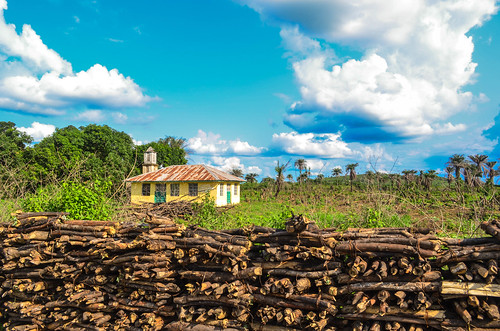
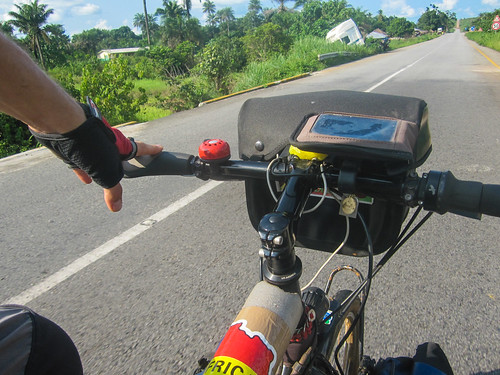
There is a fair amount of car wrecks along the road. At the exit of a village, one of them looked fresh. When examining it, a man came running from the village: he is the guard of the wreck. Making sure no one steals the still-OK engine inside.


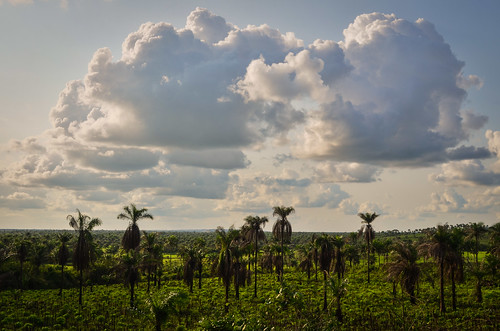
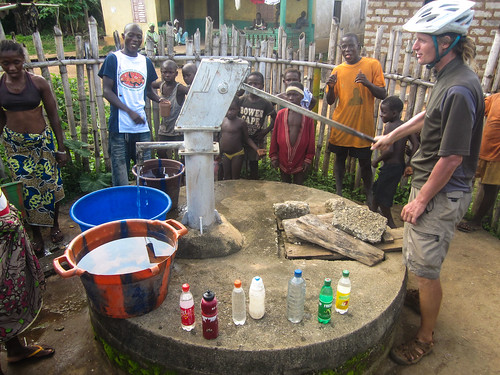
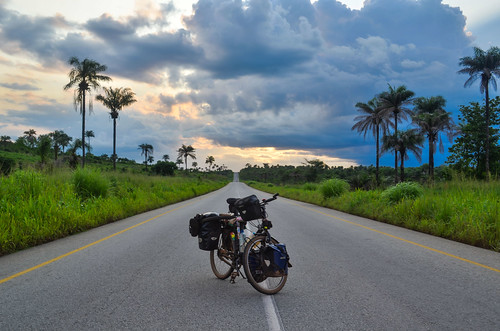
When comes the night, we stop in a village after having spotted a large structure looking like a school. The first man we talk to is Joseph, the school principal, and says there is no problem with us camping in one classroom. We have a pump nearby, meet the chief of the village, one of the oldest men, and spend the evening in Masankay. One other advantage of sleeping in a school, besides the fact that it is probably the only public structure of a village, is that the teachers and the principal speak English. Interacting in Krio is more like conversations going nowhere. It sounds like English but not as close to it as my Spanish is close to Portuguese creole.
Joseph considerately instructs the kids to leave us alone and not to wander around the classroom, which has open windows and a leaking roofing. Being under the umbrella of the chief of the village and the school’s principal, I feel we cannot be more secure and welcomed. The infrastructure in West Africa may be one of the worst in the world, the people and the hospitality make the countries a positive experience and a great adventure to travel.
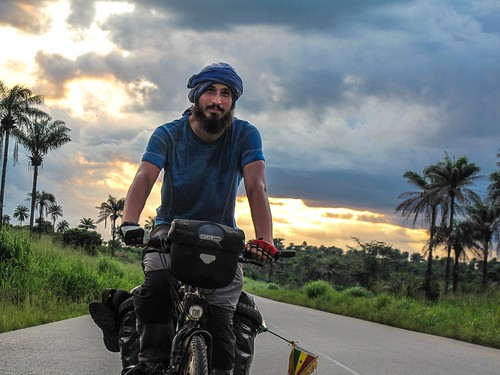







Hi JB!
what a life experience! (and a sexy curly hair style!)
I was having lunch with Julia yesterday and talking about you. Hope our ways will cross again.
I am going skydiving on 5th of October!! Made me think of the time I could not join you and Nico. 😉
muitos beijos :*
Carol
We finally didn’t make it there with Nico, so you’ll be the first. Enjoy!